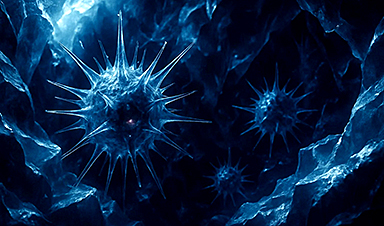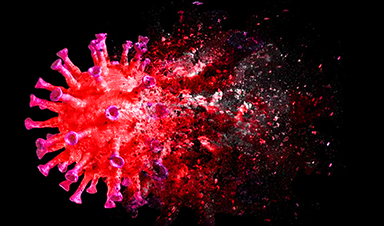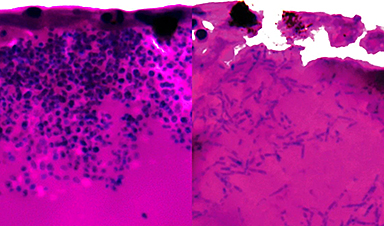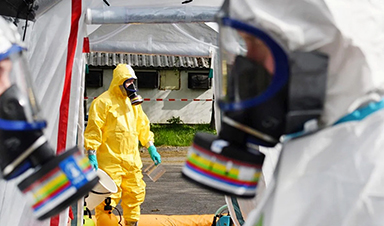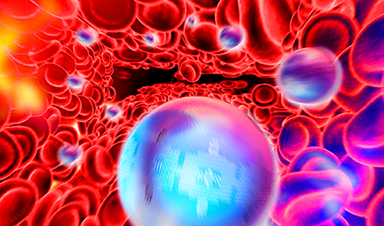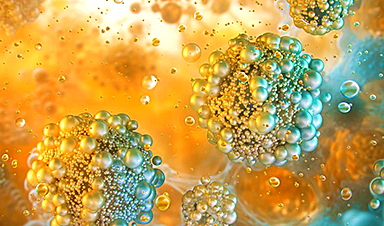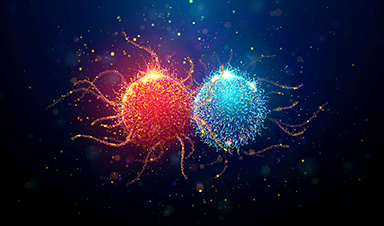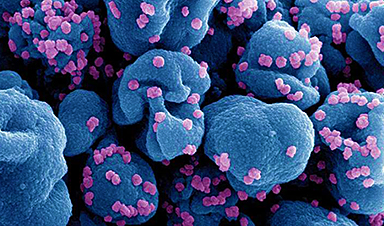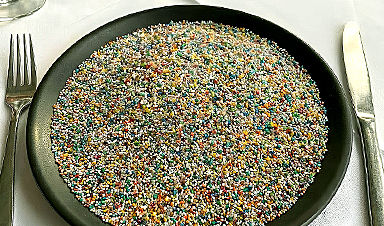Melting Arctic ice increases human and animal interactions, raising the risk of infectious disease spread. Researchers urge early intervention and surveillance.
Climate change is opening new pathways for the spread of infectious diseases such as brucellosis, tularemia, and E. coli in the Arctic, according to a broad international team of scientists with expertise in human, animal, and environmental health in the North Pole.
The researchers published their findings in the journal Science of the Total Environment, showing how melting ice is making new areas accessible for travel and industry, bringing people into closer contact with what were once isolated Arctic ecosystems.
They caution that the thawing of soil that has been frozen for thousands of years could release dormant microbes preserved in the remains of dead animals and other organisms, increasing the risk of disease outbreaks with pandemic potential.

The authors recommend actions “to enhance awareness and management of existing and emerging zoonoses with epidemic and pandemic potential while also focusing on the impacts of various environmental stressors and lifestyle factors on zoonoses in the Arctic.”
Industrial activity and ancient microbes
As the ice in the Arctic melts, more industries and people are flocking to the area, raising the chance for infectious diseases to spread, says Dr. Khaled Megahed Abass of the University of Sharjah and a co-author, stressing that “permafrost thawing could even release ancient bacteria or viruses that have been frozen for thousands of years.”
In their extensive review, the authors analyze scientific studies about and government documents from the Arctic, with a particular focus on Canada, Alaska, Greenland, and Northern Europe.
“The aim of this investigation was to understand what lessons we can learn the past to help Arctic communities better prepare for future health risks,” adds Dr. Abbas. “Climate change and pollution are affecting both animal and human health — our research looked into how these two forces are interconnected. As the Arctic warms faster than most other parts of the world, we’re seeing changes in the environment—like melting permafrost and shifting ecosystems—that could help spread infectious diseases between animals and people.”
Zoonotic pathogens and permafrost thaw
In scientific jargon, these diseases are called zoonotic pathogens with the ability to jump from wildlife to humans, especially when human activities and animal habitats overlap in a manner upsetting environmental balance. The pathogens may be parasitic, viral, or bacterial. They can include unconventional agents with the ability to spread to humans through different means like water food or the environment.
Climate change is blamed for the erratic and long-term shifts in the Earth’s weather and temperature with scientists reporting a world that has been warming up quickly in the past decades.

The Earth’s warming is behind the permafrost thaw – a process which refers to the melting of the ice in the frosty soil of Arctic regions. A thawing permafrost can have grave consequences on the environment and the inhabitants as the frozen soil melts.
The study is an extensive review of the literature and government documents from the North Pole in which a broad international consortium of scientists with a wide range of expertise “describe a selection of case studies highlighting the importance of a One Health approach to zoonoses in the circumarctic, encompassing human health, animal health, and environmental health aspects,” the authors write.
One health approach and global warning
The significance of the study emerges from the authors’ adoption of and reliance on the One Health approach in analyzing previous literature and government reports documenting transformations taking place in the Arctic due to climate change.
In their extensive review, they attempt to sustainably balance and optimize the health of ecosystems in the Arctic, recognizing that health issues, whether related to people, animals, plants, or the environment, are closely linked and interdependent.

The study, according to Abass, shows that “local communities and researchers have already noticed signs of these changes, and some are adapting—but many risks are still poorly understood.”
Dr. Abass warns that what is happening “in the Arctic doesn’t stay in the Arctic. The environmental stressors we studied have ripple effects that reach far beyond the polar regions.
Urgent need for surveillance and cooperation
“Climate change is not only melting ice—it’s melting the barriers between ecosystems, animals, and people. This study shows how environmental disruption can directly impact human health.”
The authors reaffirm the need to “enhance awareness and manage Arctic zoonoses with pandemic potential,” underscoring the fact that “about three-quarters of all known human infectious diseases are zoonotic including Arctic ones” at a time “pollution, climate change and biodiversity loss aggravate zoonoses transmission in the Arctic.”
They write, “The cases highlight critical gaps in monitoring and current knowledge, focusing on environmental stressors and lifestyle factors, and they are examples of current occurrences in the Arctic that inform on critically needed actions to prepare us for the future.”

Dr. Abass says he and colleagues authoring the study are upbeat about the interest their project has already generated. “This research has attracted interest from outside academia. Public health organizations, environmental agencies, and even northern industries (like mining and shipping) are starting to recognize the need to monitor health risks linked to changing Arctic conditions. This includes policymakers concerned about pandemic prevention and food safety in remote areas.”
The authors see their comprehensive review as a warning for “governments and communities to take action early—before outbreaks occur. It supports the development of better disease surveillance, more robust environmental monitoring, and climate-resilient public health systems. The study also shows the importance of indigenous knowledge in detecting early signs of ecosystem and health changes.”
The study highlights the importance of international cooperation coupled with transdisciplinary research collaboration. The fact that the findings stem from an international consortium involving over 15 institutions across Europe and Canada, notes Dr. Abass, is a sign “of the significance of multidirectional knowledge exchange, thematic networks and internationalization in addressing climate change issues in the Arctic.”
Reference: “Environmental stressors and zoonoses in the Arctic: Learning from the past to prepare for the future” by Emilie Andersen-Ranberg, Ingebjørg H. Nymo, Pikka Jokelainen, Anastasia Emelyanova, Solveig Jore, Brian Laird, Rebecca K. Davidson, Sonja Ostertag, Emilie Bouchard, Freja Fagerholm, Kelly Skinner, Mario Acquarone, Morten Tryland, Rune Dietz, Khaled Abass, Arja Rautio, Sjúrður Hammer, Birgitta Evengård, Tomas Thierfelder, Raphaela Stimmelmayr and Christian Sonne, 17 October 2024, Science of The Total Environment.
DOI: 10.1016/j.scitotenv.2024.176869
News
We May Never Know if AI Is Conscious, Says Cambridge Philosopher
As claims about conscious AI grow louder, a Cambridge philosopher argues that we lack the evidence to know whether machines can truly be conscious, let alone morally significant. A philosopher at the University of [...]
AI Helped Scientists Stop a Virus With One Tiny Change
Using AI, researchers identified one tiny molecular interaction that viruses need to infect cells. Disrupting it stopped the virus before infection could begin. Washington State University scientists have uncovered a method to interfere with a key [...]
Deadly Hospital Fungus May Finally Have a Weakness
A deadly, drug-resistant hospital fungus may finally have a weakness—and scientists think they’ve found it. Researchers have identified a genetic process that could open the door to new treatments for a dangerous fungal infection [...]
Fever-Proof Bird Flu Variant Could Fuel the Next Pandemic
Bird flu viruses present a significant risk to humans because they can continue replicating at temperatures higher than a typical fever. Fever is one of the body’s main tools for slowing or stopping viral [...]
What could the future of nanoscience look like?
Society has a lot to thank for nanoscience. From improved health monitoring to reducing the size of electronics, scientists’ ability to delve deeper and better understand chemistry at the nanoscale has opened up numerous [...]
Scientists Melt Cancer’s Hidden “Power Hubs” and Stop Tumor Growth
Researchers discovered that in a rare kidney cancer, RNA builds droplet-like hubs that act as growth control centers inside tumor cells. By engineering a molecular switch to dissolve these hubs, they were able to halt cancer [...]
Platelet-inspired nanoparticles could improve treatment of inflammatory diseases
Scientists have developed platelet-inspired nanoparticles that deliver anti-inflammatory drugs directly to brain-computer interface implants, doubling their effectiveness. Scientists have found a way to improve the performance of brain-computer interface (BCI) electrodes by delivering anti-inflammatory drugs directly [...]
After 150 years, a new chapter in cancer therapy is finally beginning
For decades, researchers have been looking for ways to destroy cancer cells in a targeted manner without further weakening the body. But for many patients whose immune system is severely impaired by chemotherapy or radiation, [...]
Older chemical libraries show promise for fighting resistant strains of COVID-19 virus
SARS‑CoV‑2, the virus that causes COVID-19, continues to mutate, with some newer strains becoming less responsive to current antiviral treatments like Paxlovid. Now, University of California San Diego scientists and an international team of [...]
Lower doses of immunotherapy for skin cancer give better results, study suggests
According to a new study, lower doses of approved immunotherapy for malignant melanoma can give better results against tumors, while reducing side effects. This is reported by researchers at Karolinska Institutet in the Journal of the National [...]
Researchers highlight five pathways through which microplastics can harm the brain
Microplastics could be fueling neurodegenerative diseases like Alzheimer's and Parkinson's, with a new study highlighting five ways microplastics can trigger inflammation and damage in the brain. More than 57 million people live with dementia, [...]
Tiny Metal Nanodots Obliterate Cancer Cells While Largely Sparing Healthy Tissue
Scientists have developed tiny metal-oxide particles that push cancer cells past their stress limits while sparing healthy tissue. An international team led by RMIT University has developed tiny particles called nanodots, crafted from a metallic compound, [...]
Gold Nanoclusters Could Supercharge Quantum Computers
Researchers found that gold “super atoms” can behave like the atoms in top-tier quantum systems—only far easier to scale. These tiny clusters can be customized at the molecular level, offering a powerful, tunable foundation [...]
A single shot of HPV vaccine may be enough to fight cervical cancer, study finds
WASHINGTON -- A single HPV vaccination appears just as effective as two doses at preventing the viral infection that causes cervical cancer, researchers reported Wednesday. HPV, or human papillomavirus, is very common and spread [...]
New technique overcomes technological barrier in 3D brain imaging
Scientists at the Swiss Light Source SLS have succeeded in mapping a piece of brain tissue in 3D at unprecedented resolution using X-rays, non-destructively. The breakthrough overcomes a long-standing technological barrier that had limited [...]
Scientists Uncover Hidden Blood Pattern in Long COVID
Researchers found persistent microclot and NET structures in Long COVID blood that may explain long-lasting symptoms. Researchers examining Long COVID have identified a structural connection between circulating microclots and neutrophil extracellular traps (NETs). The [...]
